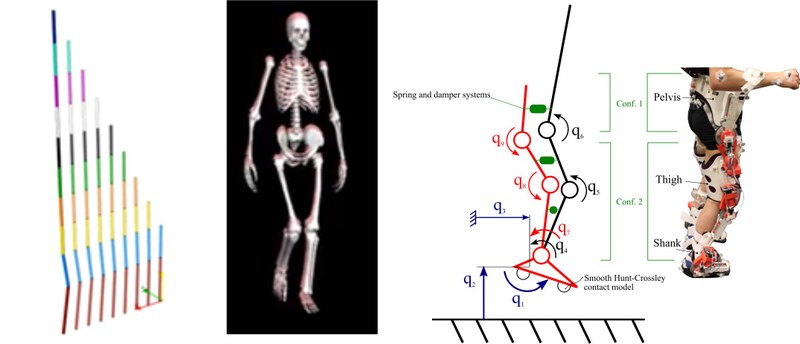Researchers from Stanford University, KU Leuven and UPC integrated automatic differentiation tools into biomechanics software to obtain movement simulations up to 20 times faster
Dec 13, 2019
Antoine Falisse (KU Leuven, Belgium) and Gil Serrancolí (Simulation and Movement Analysis Lab, UPC) integrated automatic differentiation tools into biomechanics software OpenSim and Simbody.
These automatic differentiation tools allow calculating derivatives of mathematical expressions more efficiently than using finite differences. These tools are very useful to solve optimization problems which need the calculation of thousands or millions of derivative evaluations of mathematical expressions. Biomechanical simulations aiming to calculate optimal trajectories are usually based on the resolution of an optimal control problem (dynamic optimization). The authors applied the developed method to this type of simulations.
This project started in 2016, and in 2017 Falisse and Serrancolí were awarded as OpenSim Visiting Scholars to do a research stay of one month at Stanford University and develop the project. The results of this study, led by Friedl De Groote (KU Leuven), were published in a scientific article in PlosOne. In this article, they compared the efficiency of the optimizations using either automatic differentiation or finite differences in biomechanical simulations, which can be up to 20 times faster using automatic differentiation:
Gil Serrancolí used this method to estimate the parameters of a contact model between subject and exoskeleton, and between foot and ground, to later predict new collaborative movements between subject and exoskeleton. This study was framed within his postdoc at KU Leuven. The results can be found in the following publication:
Antoine Falisse used the mentioned method to obtain predictions of human gait and study different control strategies:
Those studies represent a significant contribution to the biomechanics field, since the computational time to solve the optimizations is decreased from hours to minutes. As mentioned in the articles, this method can be useful to predict new movements in silico after a certain surgery, to design assistive devices or to design rehabilitation or training programs.

Share: